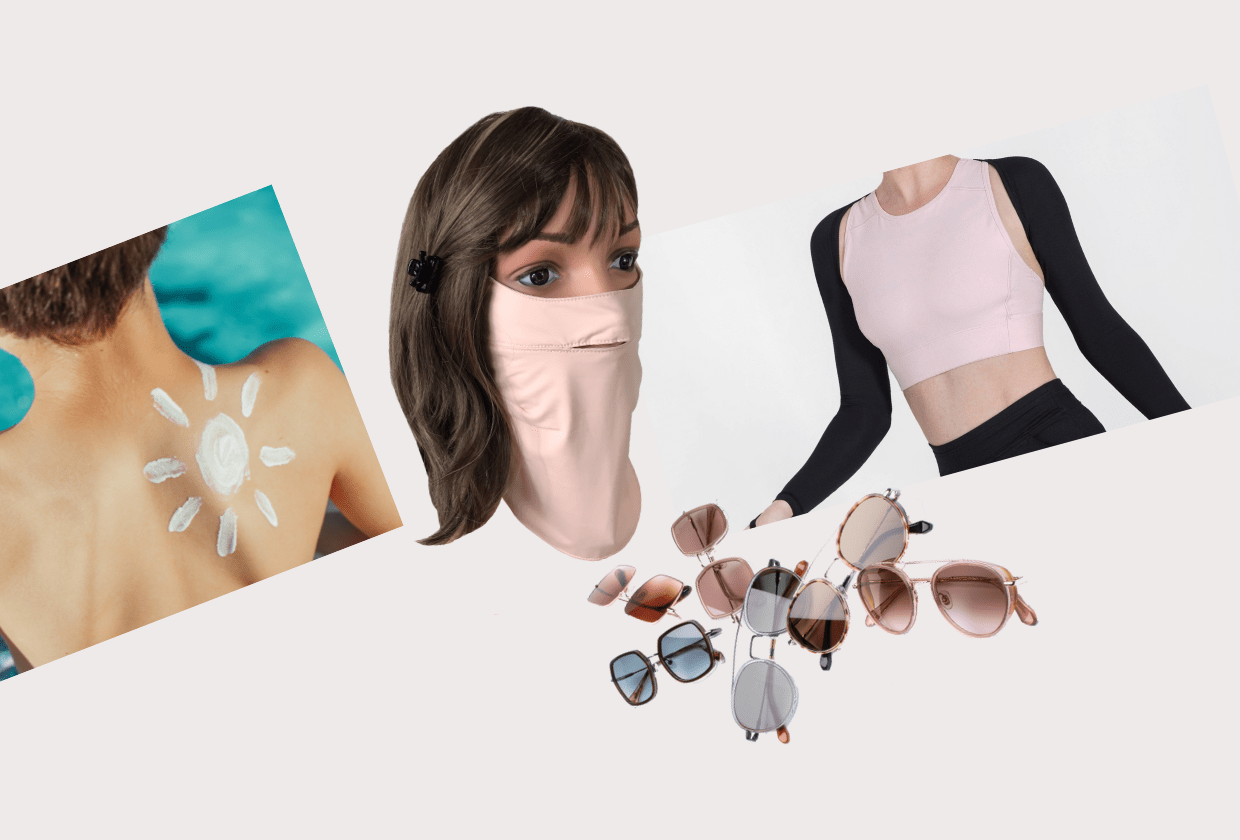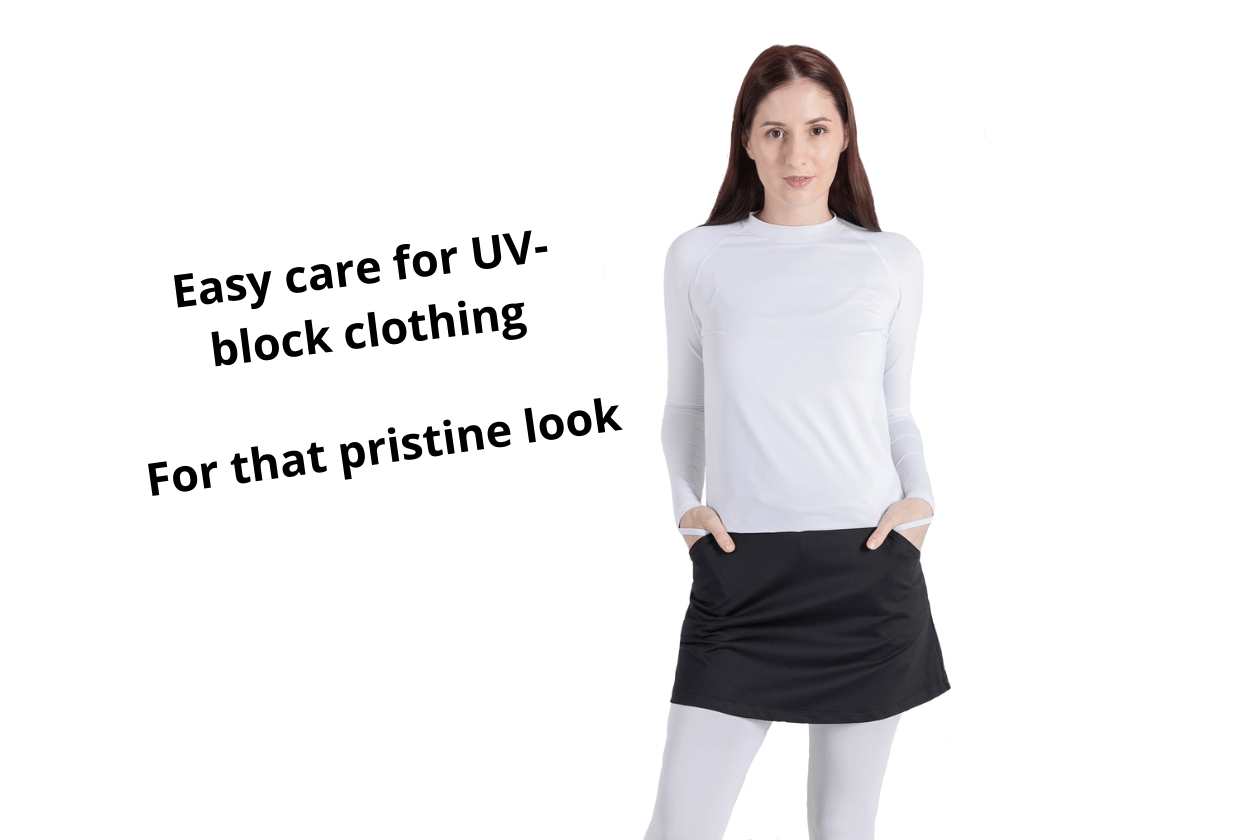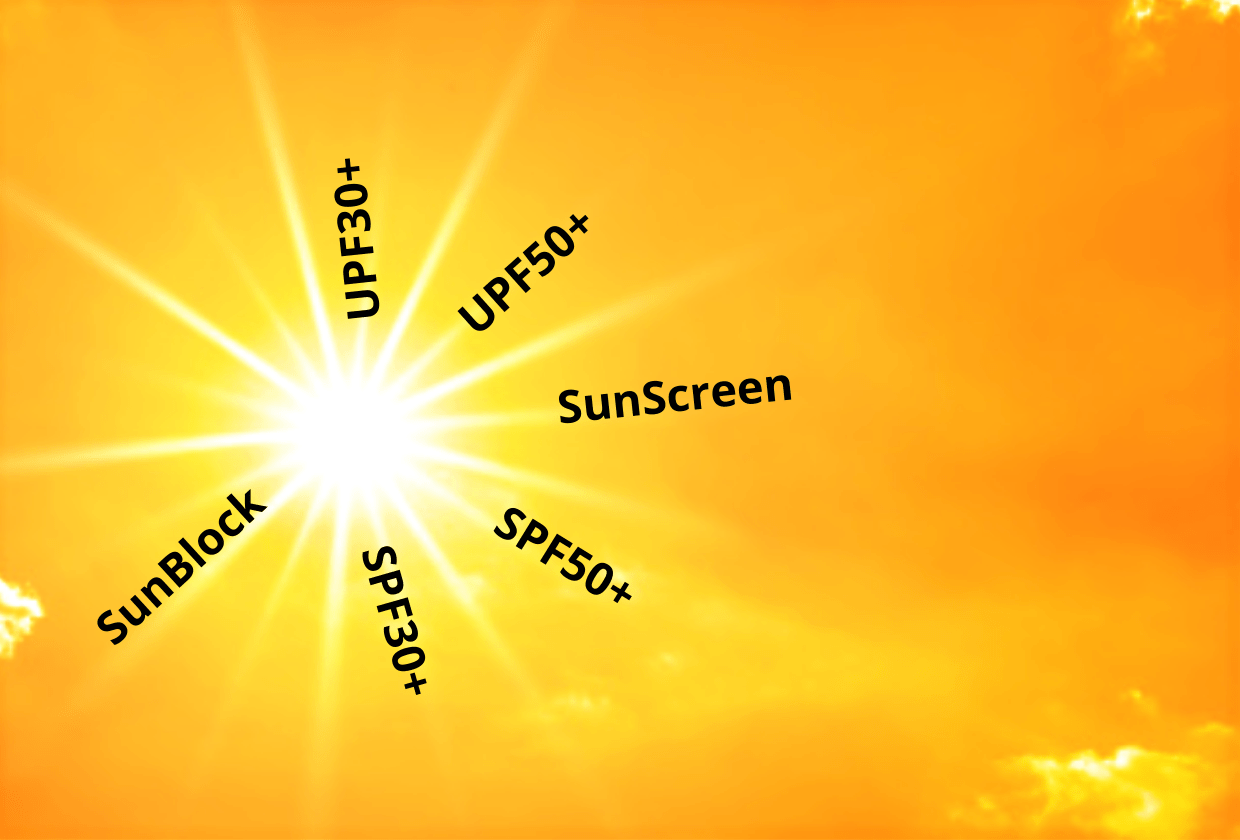Best Sun Protection Tips – Making Right Choices
So you know the A,B,Cs of UV radiation ….. how confident are you that your sun protection items are keeping you sun safe. The three key products you must assess are sunscreens, UV block clothings and sunglasses

Sunblocks vs Sunscreens
When shopping for sun protectants, did you notice the different terminologies on the packaging? While sunscreen can be used to include both sunblock and sunscreen, these two are technically different products based on how they work.
Sunblocks provide physical shields against UV rays, usually containing mineral ingredients such as zinc oxide or titanium dioxide. Primary objective is to protect against UVB, the more damaging rays. (So remember B for sunBlock and UVB). For application, just slather it on evenly ensuring total coverage.
Pro : Generally better for sensitive skin. It doesn’t wear off easily. As long as the block is in place, you are protected.
Con : Sunblocks are visible on the skin, so is aesthetically less pleasing. They can be rubbed off and moisture can reduce their effectiveness.
Sunscreens contain organic chemical compounds. They rely on chemical reactions to absorb the rays, then disperse them. Primary objective is to protect against UVA which penetrates deeper into the skin. For application, you need to rub the product onto your skin and let it be absorbed.
Pro : After absorption, it disappears and your skin looks natural.
Con : Compounds may irritate sensitive skin. It takes a little while for the product to work. It doesn’t work against UVB, the more harmful rays,
To note :
- Best practice : re-apply after two hours. Sunblocks may run off due to perspiration and water. We also touch our skin esp the face a lot which rub of the sunblock. Sunscreen effectiveness wears off after 2-3 hours.
- If your skin can tolerate it, use a UV block product that offers broad-spectrum protection against both UVA and UVB.
- Use protectants that provide a minimum of SPF30 for adequate protection. Note that UV block products do not provide 100% protection against UV rays. Which brings us to the next topic
Sun Protection Wear
Increasingly outdoor sports enthusiasts such as golfers, cyclists and trekkers are turning to sun protection masks, neck gaiters, arm sleeves, leggings and long socks for convenient sun protection. These products do not rub off, do not need re-application and are generally comfortable. The UV protection level of fabric depends on a few factors.
- UPF rating : If a fabric has been treated, the higher the UPF rating the better the block. Take note that some sun protection wears carry labels stating ‘sun protection’ or ‘UV block’. This is not incorrect since all fabric provides some protection. However, if no UPF is stated, there is a high likelihood that the items have not been treated and the UV protection will be much lower. Expect no more than UPF10 from these products. So the trade-off of an inexpensive mask or sleeve is your skin.
- Color : Darker colors absorb and disperse UV rays better. While white is a favorite color, choose darker shade if you can.
- Weave : Logically too, the tighter the fabric weave, the better the protection. Fabrics weaved from yarns that are treated for UV block may not offer good protection if the weave is loose. So, even if the yarns have UPF50+ ratings, UV rays can penetrate through the gaps in the fabric.
- Fabric or Yarn : Basic cotton is comfortable and cool but it is less protective compared to synthetics such as polyester and nylon.
- Moisture – When fabrics get wet, they lose some of their UV blocking effectiveness. So, choose products with good moisture-wicking qualities so that they dry faster when you perspire.
To note :
- No fabric can block 100% of UV rays unless they allow zero light to pass through which make them too hot to wear! Supplement with sunscreens where possible especially on the face, neck and high exposure areas. Wear a head gear and carry an umbrella where possible.
- UV radiation is strongest between 10am and 4pm. Seek as much shade as you can when you are outdoor during this time.
- Check your sun protection wear regularly. If the yarns are broken, ie you see them loosing shape, it means the fabric is allowing UV rays to pass through.
- Most products stipulate 50 washes as the limit for UV blocking effectiveness. You can source for products in the market to re-treat your items if they are still in good shape.
Sunglasses
Cataract, pterygium, macular degeneration and cancer are among some damages caused by UV rays to eyes. Sunglasses not only up your style factor, they are as important to your eyes as other sun protectants to your skin. When choosing sunglasses, remember that :
- Darker sunglasses do not equate to better UV block. The modern sunglasses tend to have UV blocking capabilities embedded in the lenses. Older sunglasses may not be treated to block UV rays, so have your older sunglasses checked by a qualified optician.
- For new purchases, make sure to get sunglasses that provide 99% – 100% UV protection.
- Polarised lenses reduce glare, so they give better vision and wearer comfort. This is not equal to UV block. Ask for sunglasses with both UV block and polarised lenses if your outdoor activities are in places where the glare affects your vision.
Let’s all continue to enjoy the outdoors. Just make sure your sun protection is adequate and get used to the discipline of rigorous protection of your skin.
Stay active and healthy, safely!
Important Note
The above is a condensed write-up to provide a quick and hopefully sufficient understanding of UV rays and protection against their harmful effects for everyday activities. For more details and deeper insights, check out websites which focus on such subject matters. And please feel free to comment or better still share if you have any stories that will benefit others. We never know, sometimes even a little thought or experience can help or inspire others.
There are no comments





